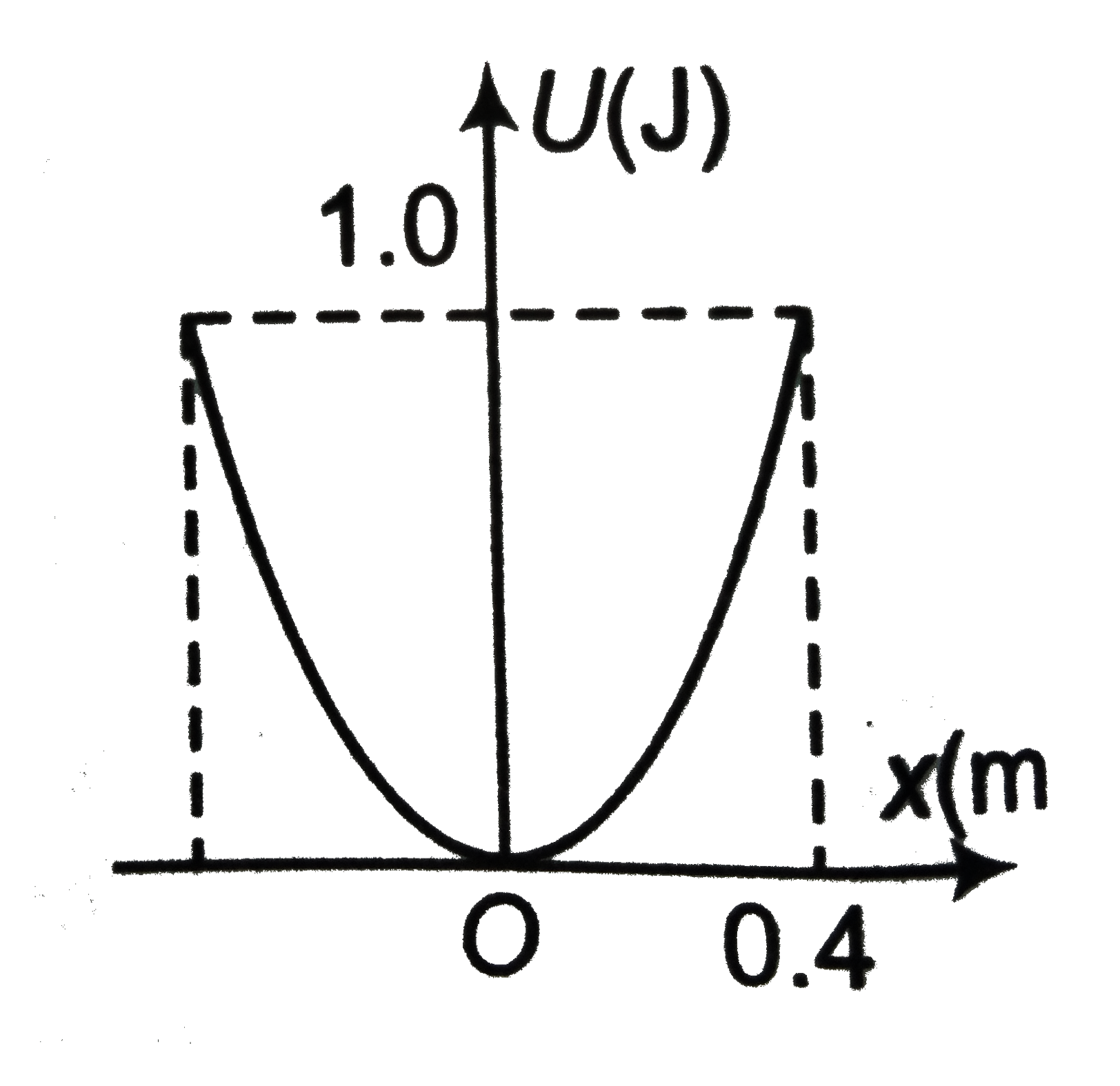A particle of mass m moves in a conservative force field along x axis where the potential energy U varies with position coordinate x as U=U0(1−cosax),U0 and a being positive constants. Which of the following statement is true regarding its motion. Its total energy is U0 and starts from x=0
the acceleration is constant
it's speed is maximum at the initial position
It's maximum x coordinate is π2a
It's maximum kinetic energy is U0
The correct Answer is:b,c,d
Topper's Solved these Questions
- BOOK - ANURAG MISHRACHAPTER - FORCE ANALYSISEXERCISE - Level-349videos
FORCE ANALYSIS
- BOOK - ANURAG MISHRACHAPTER - FORCE ANALYSISEXERCISE - Matching type13videos
FORCE ANALYSIS
- BOOK - ANURAG MISHRACHAPTER - FORCE ANALYSISEXERCISE - level 1103videos
FORCE ANALYSIS
- BOOK - ANURAG MISHRACHAPTER - DESCRIPTION OF MOTIONEXERCISE - Level-334videos
DESCRIPTION OF MOTION
- BOOK - ANURAG MISHRACHAPTER - IMPULSE AND MOMENTUMEXERCISE - matching3videos
IMPULSE AND MOMENTUM
Similar Questions
A particle of mass m is moving in a potential well, for which the potential energy is given by U(x)=U0(1−cosax) where U0 and a are positive constants. Then (for the small value of x)
View SolutionA particle of mass 2kg moves in simple harmonic motion and its potential energy U varies with position x as shown. The period of oscillation of the particle is
 View Solution
View Solution
Knowledge Check
- Question 1 - Select One or More
A particle of mass m is moving in a potential well, for which the potential energy is given by U(x)=U0(1−cosax) where U0 and a are positive constants. Then (for the small value of x)
Athe time period of small osciallation is T=2π√maU0Bthe speed of the particle is maximum at x=0Cthe amplitude of oscillations is π8Dthe time period of small osciallations is T=2π√ma2U0 - Question 2 - Select One
A particle of mass 2kg moves in simple harmonic motion and its potential energy U varies with position x as shown. The period of oscillation of the particle is
 A2π5sB2√2π5sC√2π5sD4π5s
A2π5sB2√2π5sC√2π5sD4π5s
A particle of mass 2kg moves in simple harmonic motion and its potential energy U varies with position x as shown. The period of oscillation of the particle is
 View Solution
View SolutionA particles is in a unidirectional potential field where the potential energy (U) of a partivle depends on the x-coordinate given by Ux=k(1−cosax) & and 'a' are constant. Find the physical dimensions of 'a' & k.
View SolutionA partical of mass m is located in a unidimensionnal potential field where potentical energy of the partical depends on the coordinates xas:U(x)=U0(1−cosAx),U0 and A constants.
Find the period of small oscillation that the partical performs about the equilibrium position.View SolutionA particle of mass m is located in a unidimensional potential field where potential energy of the particle depends on the coordinates xas:U(x)=U0(1−cosAx),U0 and A constants.
Find the period of small oscillation that the particle performs about the equilibrium position.View SolutionThe potential energy of a particle of mass m is given by U(x)=U0(1−coscx) where U0 and c are constants. Find the time period of small oscillations of the particle.
View SolutionA particle of mass m can move along x -axis of co-ordinate frame in a force field of stationary sources. Potential energy ' U of system varies wita position x of the particle according to the equation U=k|x|, where k is a positive constant. If the particle is projected from the origin with a kinetic energy E, and its period of bounded motion is Nk√mE2. Find the value of N.
View Solution

